This Guideline does not apply to situations where there is a credible threat of further explosions, where it appears that the media are being deliberately targeted, or for work in areas designated as 'hostile' under the Βι¶ΉΤΌΕΔ High Risk Policy - in these instances, speak directly with the Βι¶ΉΤΌΕΔ High Risk Team (see Related Topics - Contacts).
Staff should be realistic and proceed with caution, considering we will be attempting to deal with a bomb situation that others may have been planning for some time to cause maximum damage and destruction, including possible secondary attacks on so-called soft targets.
It is always helpful if you have a pre-prepared plan of the actions to take:
1. Prior to an emergency situation arising
2. During an emergency
3. Re-grouping following an emergency - learn / improve our actions should it happen again.
Support and follow up measures should be put in place to assist those who may be subject to or witness traumatic events or situations.
What Can Go Wrong?
- Serious and life threatening injuries from blast, debris, fragments, heat, shockwaves and shrapnel.
- Security and personal safety related issues.
- Potential exposure to chemicals and biological agents.
- Temporary or permanent hearing/sight loss and disorientation.
- Communication failure - mobile phone systems are likely to crash or be switched off in a civil emergency.
- Failure of services including electricity, water, gas including traffic lights and street lighting may fail.
- Trauma where staff and observers are exposed to a violent situation, personal life threatening danger or fear of death.
Legal/Βι¶ΉΤΌΕΔ Requirements
- Βι¶ΉΤΌΕΔ Editorial guidelines, Section 11: War, Terror and Emergencies.
- Contact Head of Corporate Security & Investigations if you believe that your programme activity or personal profile may give rise to security threats to yourself, or to the Βι¶ΉΤΌΕΔ.
- The Βι¶ΉΤΌΕΔ Safety and the High Risk team can give support for productions that may enter hostile environments.
Control Measures
General Controls
- Consider the possibility of a second planned or subsequent explosion this includes identifying anything that could be a risk.
- Co-operate with emergency services respect cordons and exclusion zones.
- Before the bomb explodes, staff can only be safe by position or distance and this means outside the predicted blast or fall out area.
- Staff including camera, sound and journalists should decide as practical on the best possible elevated position with clear visual access outside the blast or fall out area if possible using existing cover.
- Be realistic about what coverage is achievable, you may not safely be able to see the site of the attack.
- Establish contact with any Incident control or local security/ police/military command, select a broadcasting position avoiding being put at risk by overhanging or damaged buildings.
- Keep up to date with what is happening or planned to happen, assess escape routes and be prepared to evacuate, avoiding further hazards.
- Continually reassess the situation. Evacuate if there is hostility to media crews or if media crews are targets of the attack.
- Consider communications and use of sat phones, walkie-talkies, call in times, checking in with news desk and deployers.
- Once the bomb explodes and the fire and emergency services take over. They will establish a cordon and assume Health and Safety of all staff in this cordon and police will co-ordinate this.
Chemical and Biological
- If chemical/biological, evacuate at first opportunity.
- Avoid breathing any dust from detonation and use PPE such as suitable face masks if available.
- Seek advice from Occupational Health.
- Contact Βι¶ΉΤΌΕΔ for information in an Emergency and informing Βι¶ΉΤΌΕΔ so Βι¶ΉΤΌΕΔ 159 procedures can start.
Division Specific Issues
- This information is specific to Journalists and News departments.
- Work within the requirements of the Editorial guidelines and contact the High Risk team where you might enter hostile environments or need a high environments risk assessment. These activities may need a higher level of approval.
FAQs/Did You Know?
- An explosion is defined as the sudden and rapid release of gases from a confined space. It needs a combustible material, oxygen and a source of ignition. In a bomb these components are usually bound together so that when detonated combustion happens very rapidly, at anywhere from 9,000 to 27,500 feet per second.
Recommended links
-
-
-
-
Emergency Information about major incidents at Βι¶ΉΤΌΕΔ premises
-
EPC provides resilience training, exercising and advisory services to organisations in the UK and around the world
-
Dangerous deployment topics
-

Disaster Coverage
A guide to covering disasters. -
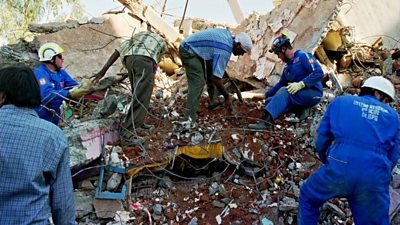
Disaster Coverage - Health Aspects
A guide to health risks when visiting areas subject to natural or man-made disasters. -
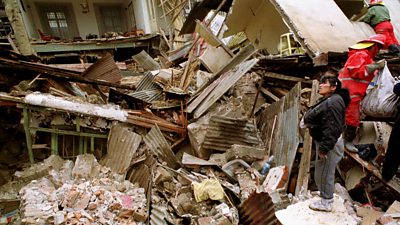
Earthquakes
A guide to working in areas affected by earthquakes. -

Fires - Buildings and Bushfires
A guide to deployments of journalists and crew to large building fires and bushfires. -
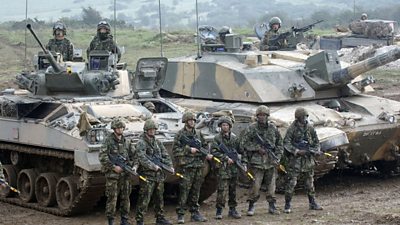
Hostile Environments
Hostile Environments and Travel Advisory information and Country List -
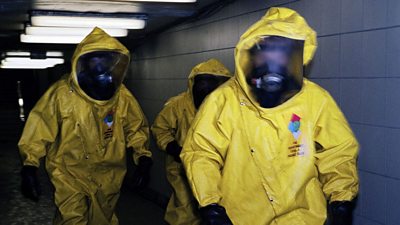
Industrial Spills and Chemical, Biological, Radiation Hazards
A guide to chemical, biological and radiation related hazards. -
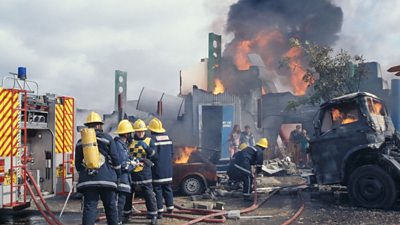
Trauma and PTSD
A guide to dealing with trauma or a traumatic event. -
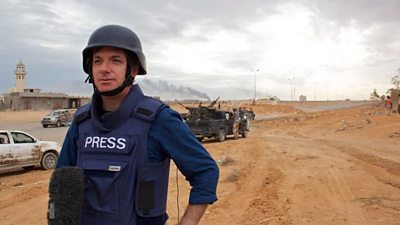
Safety Equipment Stores
Our safety equipment store details -

Terrorist Bomb Incidents
A guide to covering bomb story threats
More from SSR
-
Your platform to record accidents, risk assessments, assurance monitoring and inspections
-
Safety Equipment Stores
Just one number to call: 020 3614 5155 -
Βι¶ΉΤΌΕΔ Safety Guidelines
An A-Z of Βι¶ΉΤΌΕΔ's Health and Safety Guidelines -
Safety Advice Line: 0370 411 0464 Email: safety@bbc.co.uk
- A-Z of Βι¶ΉΤΌΕΔ Safety Guidelines
- Accident Reporting and Investigation
- Βι¶ΉΤΌΕΔ Health & Safety Policy
- Contractors (incl. vetted lists)
- Contributors
- Fire Safety
- Freelancers
- Independent Production Companies
- Risk Assessment
- Safety Alerts
- Safety Responsibilities
- Safety Training
- Sets & Premises Safety Guide
Events guidance - key links:
- Exhibitions
- General Guidance
- Indoor Location Recce Checklist
- Outdoor Location Recce Checklist
- Major Incidents & Emergency Planning
- Marketing and Promotional
- Noise Exposure
- Planning and Management
- Responsibilities
- Responsibilities Form
- Laser Lighting Effects
- Strobe Lighting
- Temporary Stages and Rostra
Health topics - key links:
- (Βι¶ΉΤΌΕΔ network only)
- Contributors Fitness to Participate
- Display Screen Equipment (DSE)
- (Βι¶ΉΤΌΕΔ network only)
- First Aid and Welfare on Location
- International Travel - Risks & Health
- Manual Handling
- Mental Health: Βι¶ΉΤΌΕΔpage
- (Βι¶ΉΤΌΕΔ network only)
- Personal Health and Wellbeing
- Pregnancy
- Psychological Trauma Support & Trauma Risk Management (TRiM)
- Tiredness and Fatigue
- Travel Health Contacts
Βι¶ΉΤΌΕΔ High Risk - key links:
- CBRN and Industrial Spills
- Covert Filming
- Crisis Management and Security Support
- Demonstrations, Protests and Crowds
- Disaster Coverage
- Door Stepping
- (Βι¶ΉΤΌΕΔ network only)
- (Βι¶ΉΤΌΕΔ network only)
- Public Order
- Safety Equipment Stores
Βι¶ΉΤΌΕΔ Journalism - key links:
Βι¶ΉΤΌΕΔ Productions - key links:
- Aerial Filming and Airfields
- Animals: Displaying and handling for performance
- Boats: Working on
- Children and Young People
- Driving
- Electrical Equipment and Systems
- First Aid and Welfare on Location
- Food Safety (Cooking and Catering)
- Remote Location Working
- Roads and Streets: Working by
- Security of Productions on Location
- Stunts
- Tiredness and Fatigue
- Unmanned Aerial Systems (UAS aka Drones)
- Vehicles: Recording in, from and around
- Working at Height: Mobile Elevating Work Platforms
- Working at Height: Tower Scaffolds
Βι¶ΉΤΌΕΔ Radio - key links:
- (Βι¶ΉΤΌΕΔ Network only)
Βι¶ΉΤΌΕΔ Security - key links:
Βι¶ΉΤΌΕΔ Sport - key links:
About this site
This site describes what the Βι¶ΉΤΌΕΔ does in relation to managing its health, safety and security risks and is intended for those who work directly for the Βι¶ΉΤΌΕΔ.
It is not intended to provide instruction or guidance on how third parties should manage their risks. The Βι¶ΉΤΌΕΔ cannot be held liable for how this information is interpreted or used by third parties, nor provide any assurance that adopting it would provide any measure of legal compliance. More information
Some links on this site are only accessible when connected to the Βι¶ΉΤΌΕΔ network
